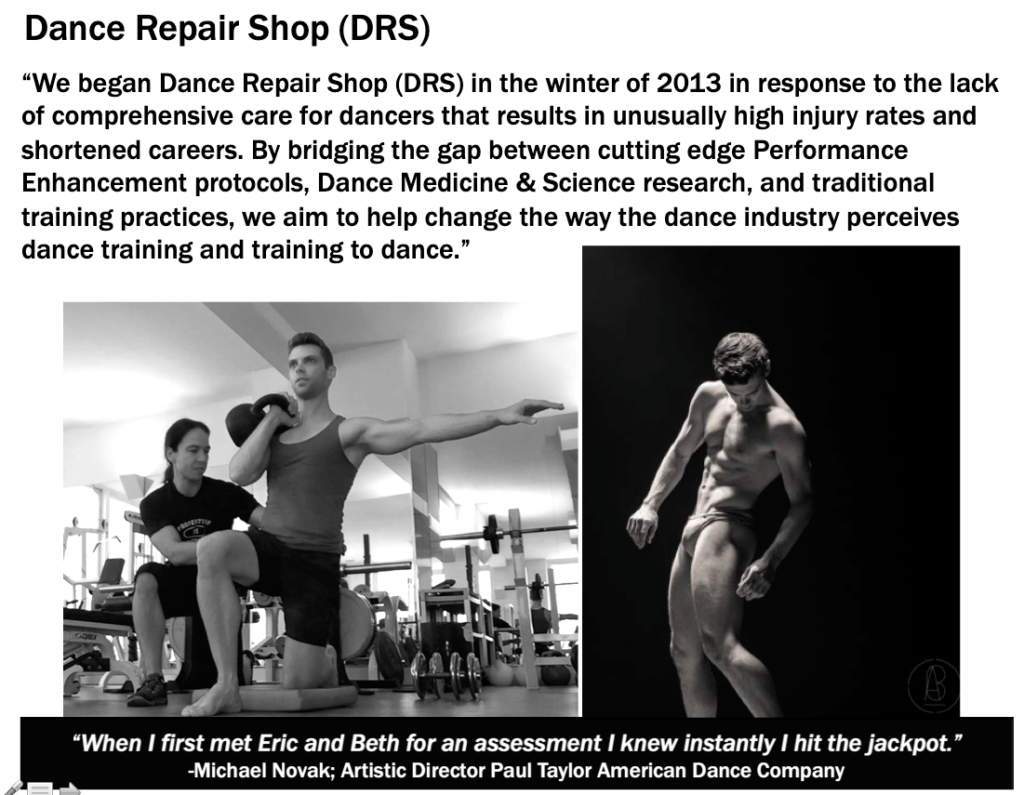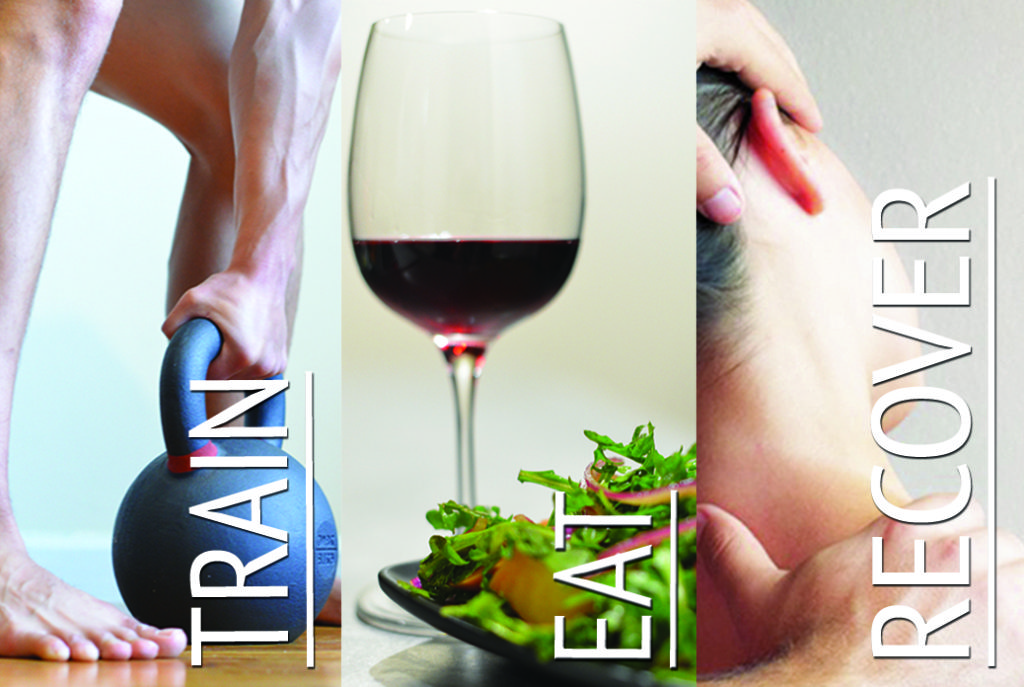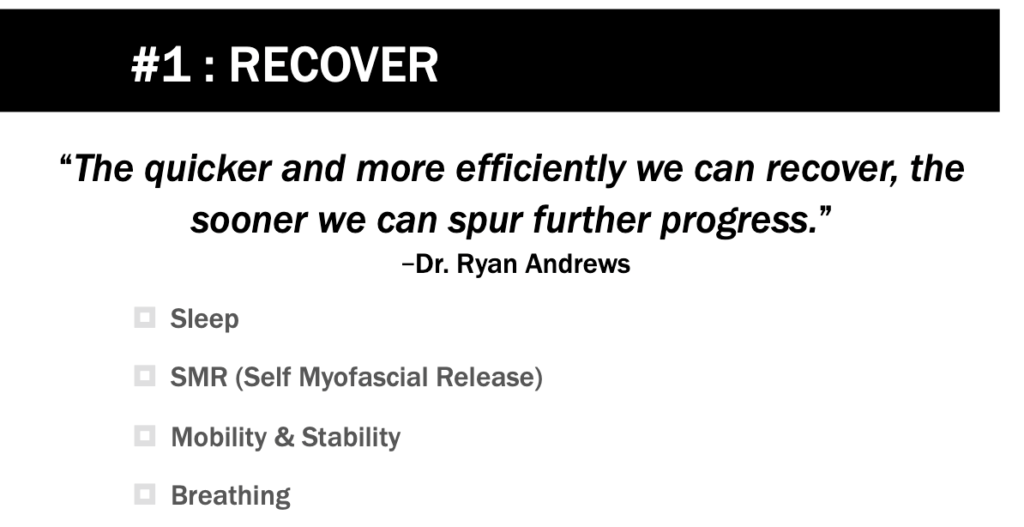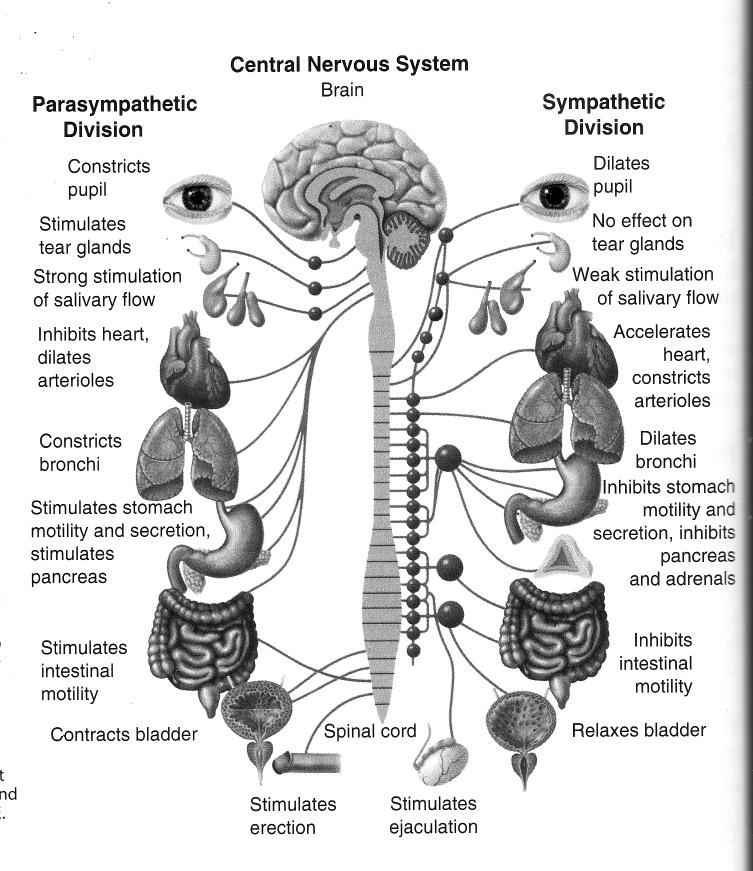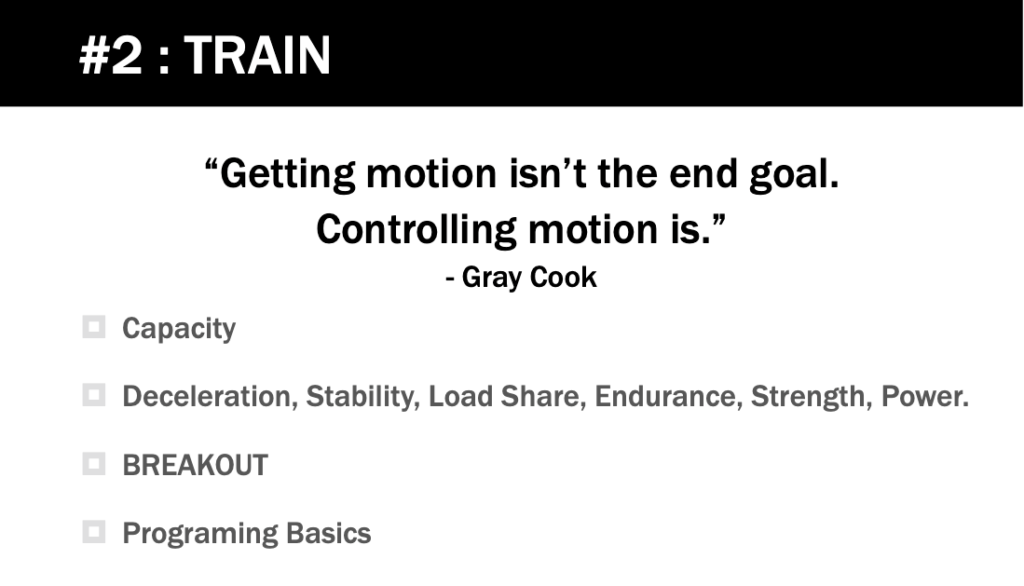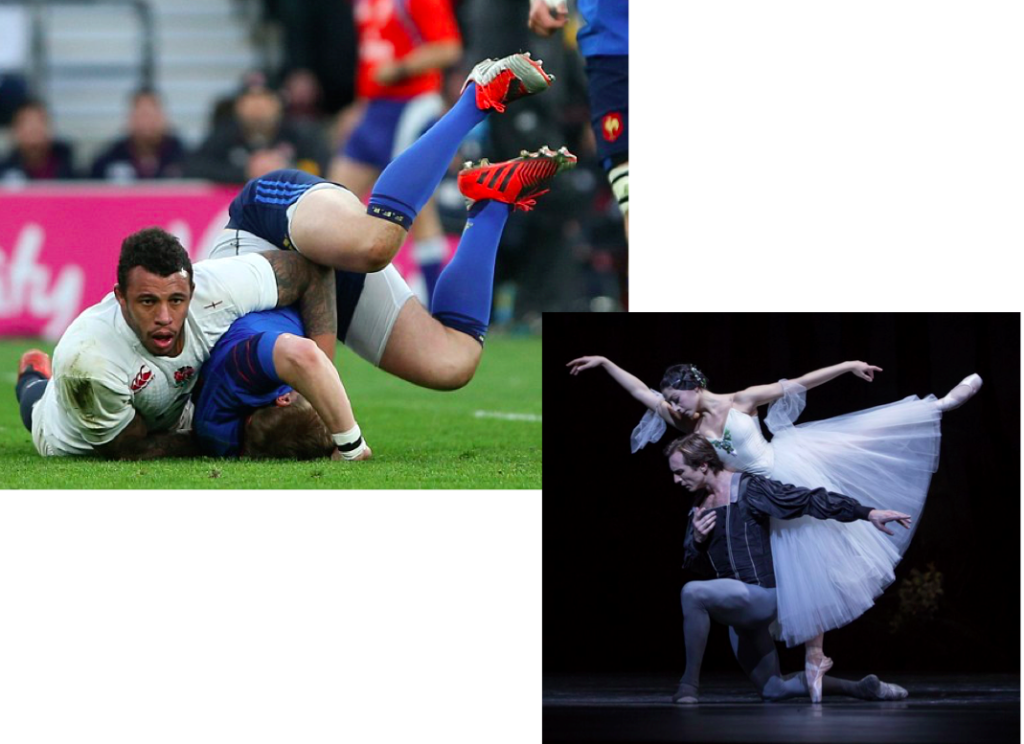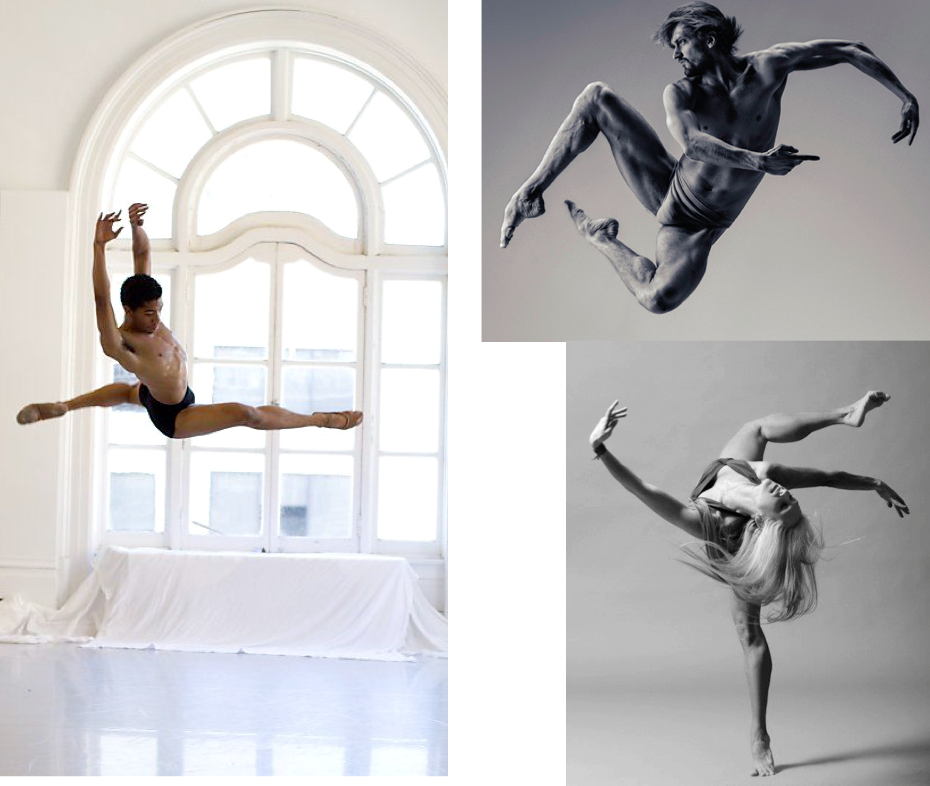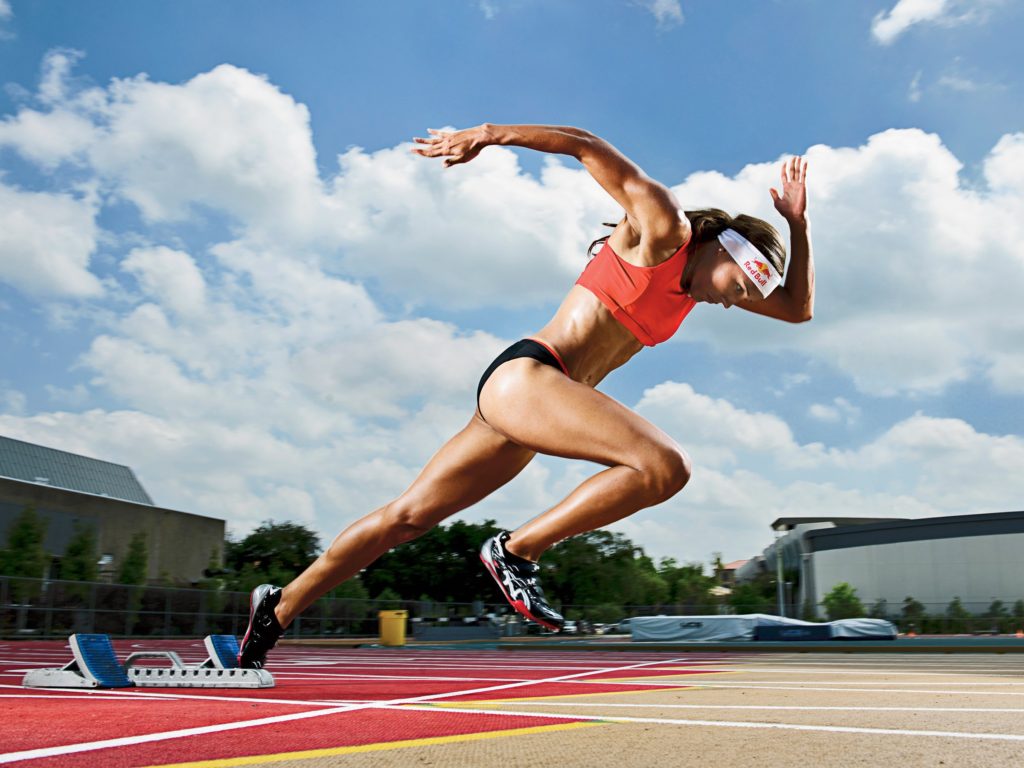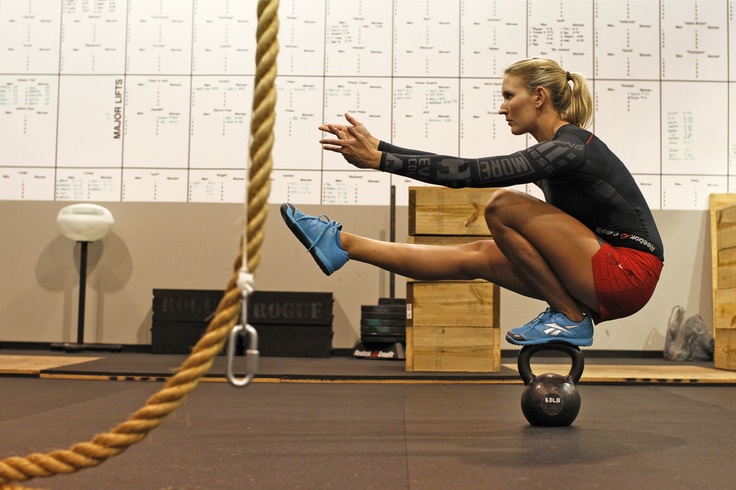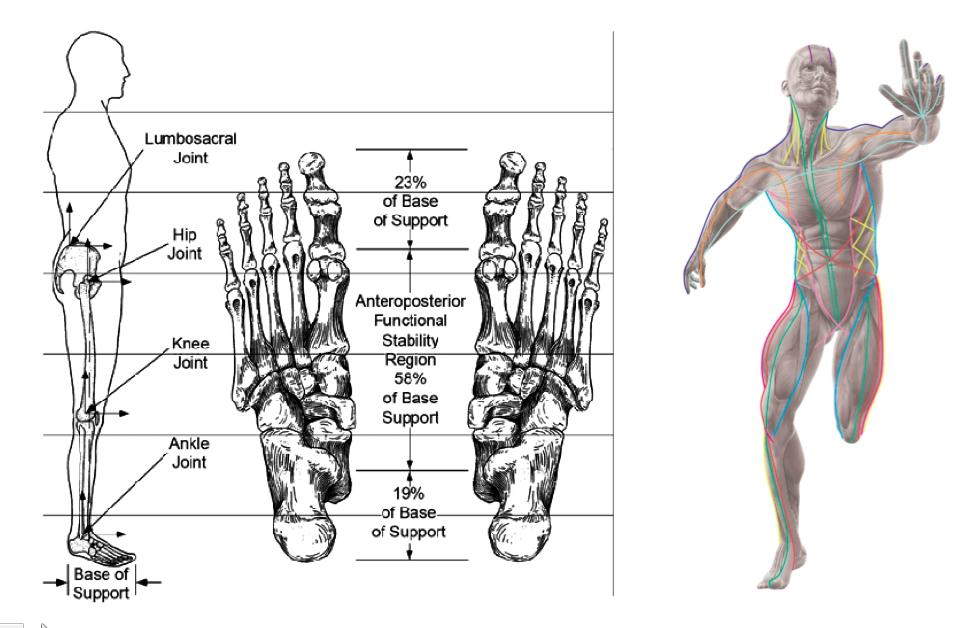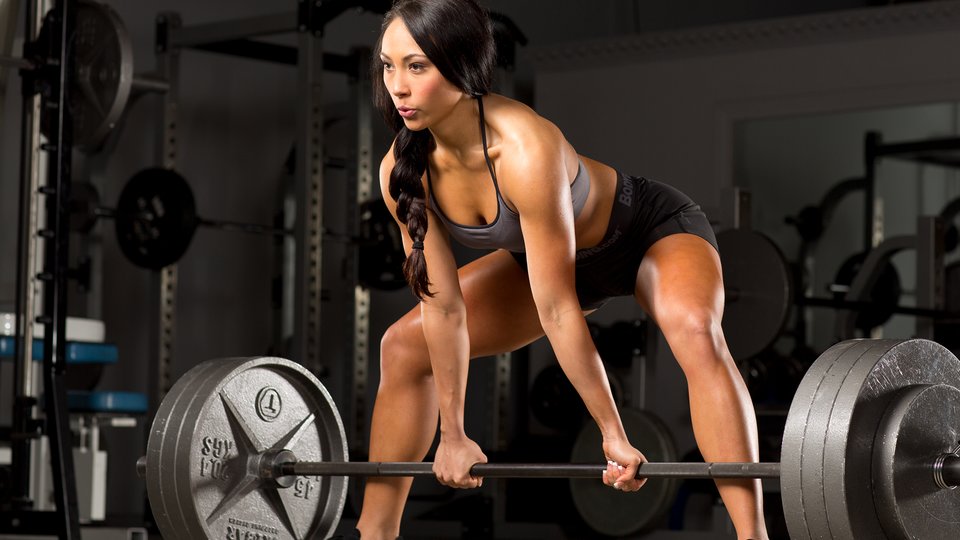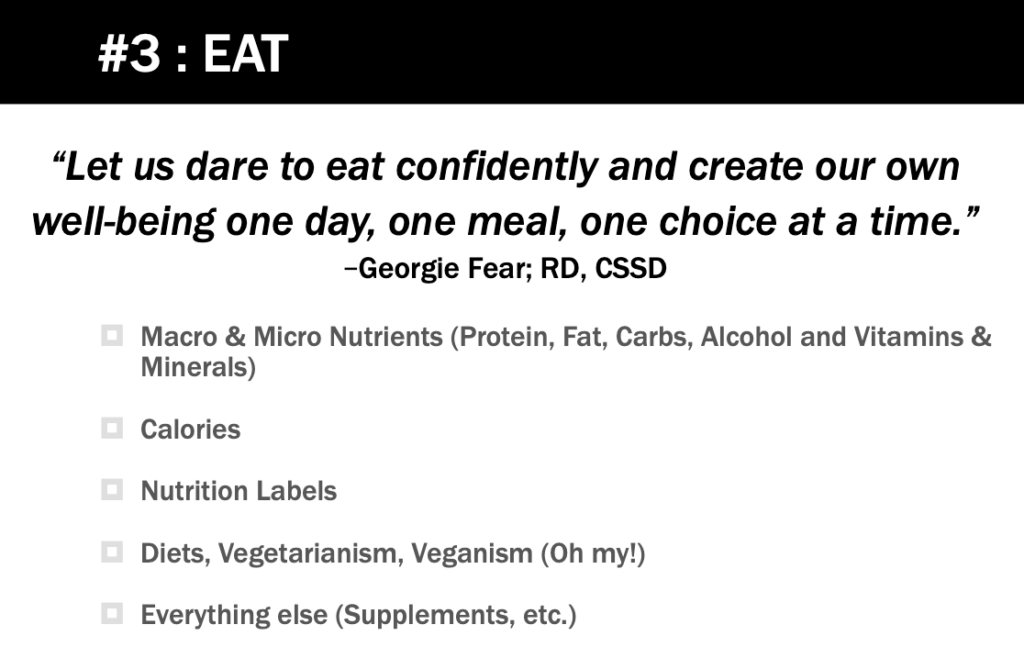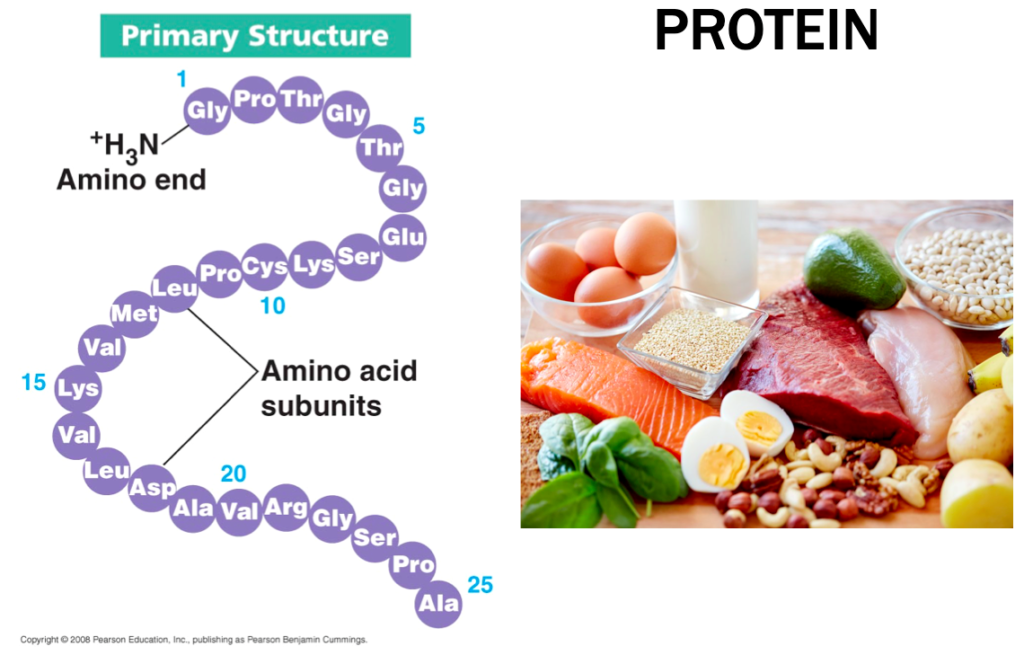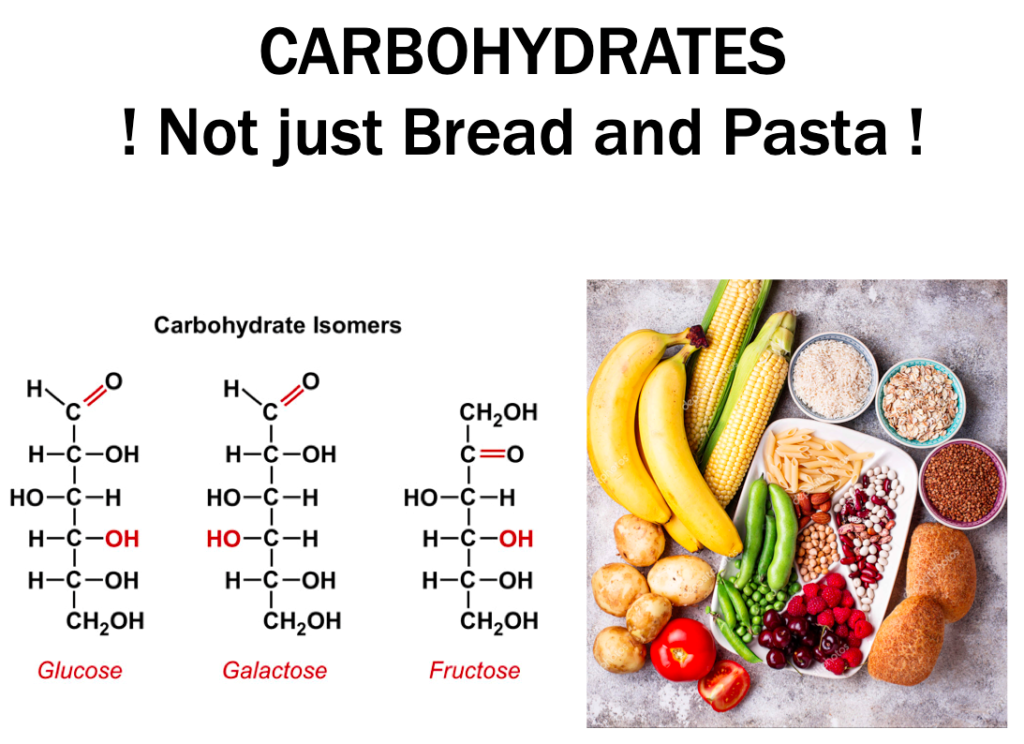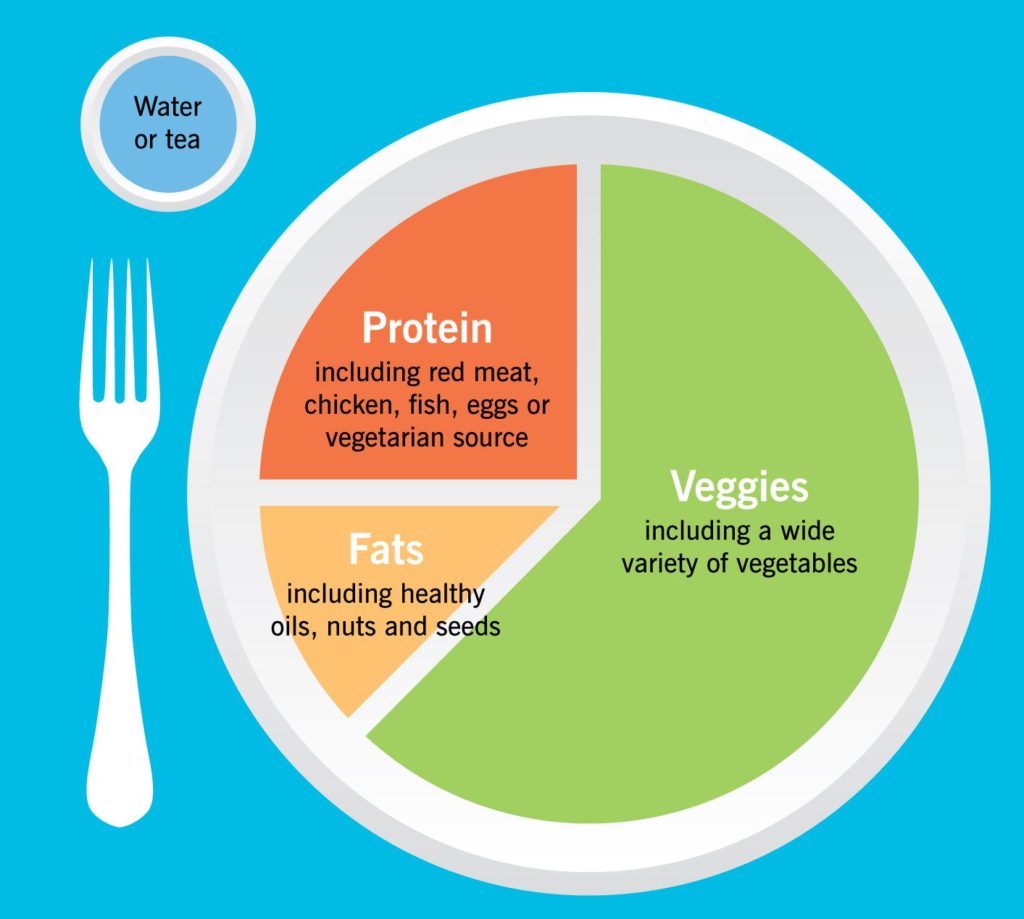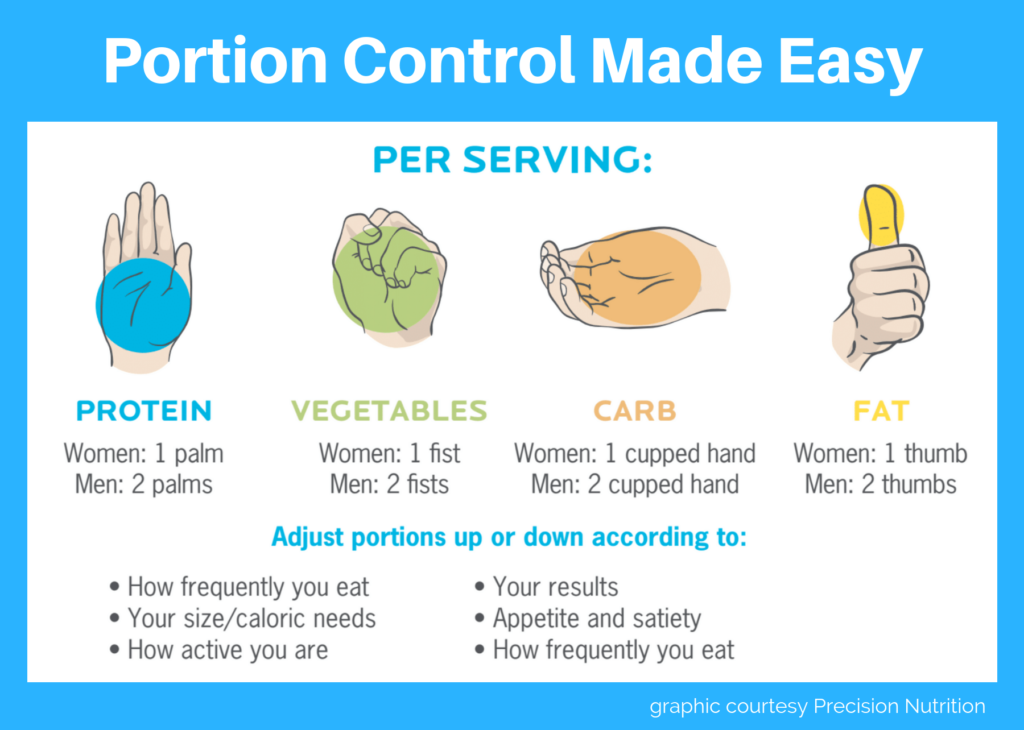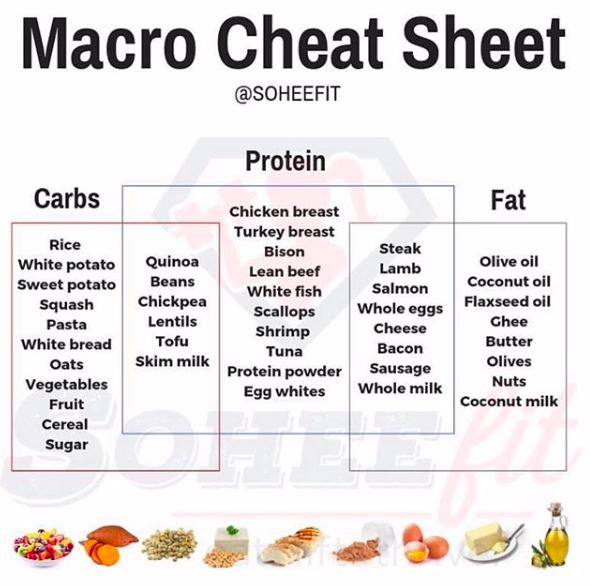Dancers are an underserved population of athletes. Things are changing: Cirque, for instance has an on-site PT and a Strength Coach, and there’s the burgeoning research field of Dance Medicine; but the current economics of dance require a higher level of self-sufficiency. To complicate things further, the quality of information available is generally dogmatic, myopic, or worse.
That being said, our main goal for today:
“We want to demystify the nutrition, training, and recuperation processes for you. Our intent is provide you with information that you can take with you and begin to use immediately. Information that will help you look, feel, and perform better both on and off the stage.”
Regardless of the trajectory of your dance career, these are things you can take with you forever.
The Bergmann Fitness Core System…
“Train. Eat. Recover.”
These are the three tenets of health, high performance, and resilience.
Who’s familiar with the Pareto Principle?
It’s the 80:20 rule — 20% of your efforts generate 80% of your results, and the other 80% of your efforts only generate 20% of your results.
Train. Eat. Recover. is the foundational 20% that gets you 80% of your results.
If you’re distressed about the quantity of adaptogens in your Kombucha, are desperately trying to fit in doing 1,000 theraband exercises per day, or are up late worrying about which form of magnesium will help you recover, you’re wasting your very limited time and available energy.
Until all the basics are lined up, you’re majoring in the minors. You’re mowing the lawn while the house is on fire.
Taking TER seriously will save you time, energy, and heartache (and body-ache).
So, what are the foundational elements of each tenet?
Why recover?
Seems like a simple enough question: you need to recover to perform your best and to avoid breakdown.
Yet we find many dancers are not fully recovering, are not paying attention to recovery, or are wasting a ton of time and money on various modalities that have minor effects (or no positive effect at all).
What is recovery, and what should recovery look like?
Recovery relies on a systemic response. It all starts with moving the autonomic nervous system from a more sympathetic to a more parasympathetic state (hold onto that term: parasympathetic).
Recovery should be cheap, portable, impactful, and high-quality. If it doesn’t check off all of those boxes it’s on the wrong side of the 80:20 equation.
Remember, you can’t take your reformer or $5,000 gyro-tonics machine with you, and in most companies you’re not taking your acupuncturist or PT with you either.
So, how do we recover?
We’ll start with the boring but critical stuff: sleep.
If you’re not sleeping, you’re not recovering. Your tissues won’t recover and remodel as well, your brain won’t work as well, and all of your homeostatic processes will be thrown off.
We often find people are struggling with sleep in part because they’re unaware of how it works, or they’re unaware of the simple things we can do to improve sleep quality and quantity.
Two-Process Model of sleep:
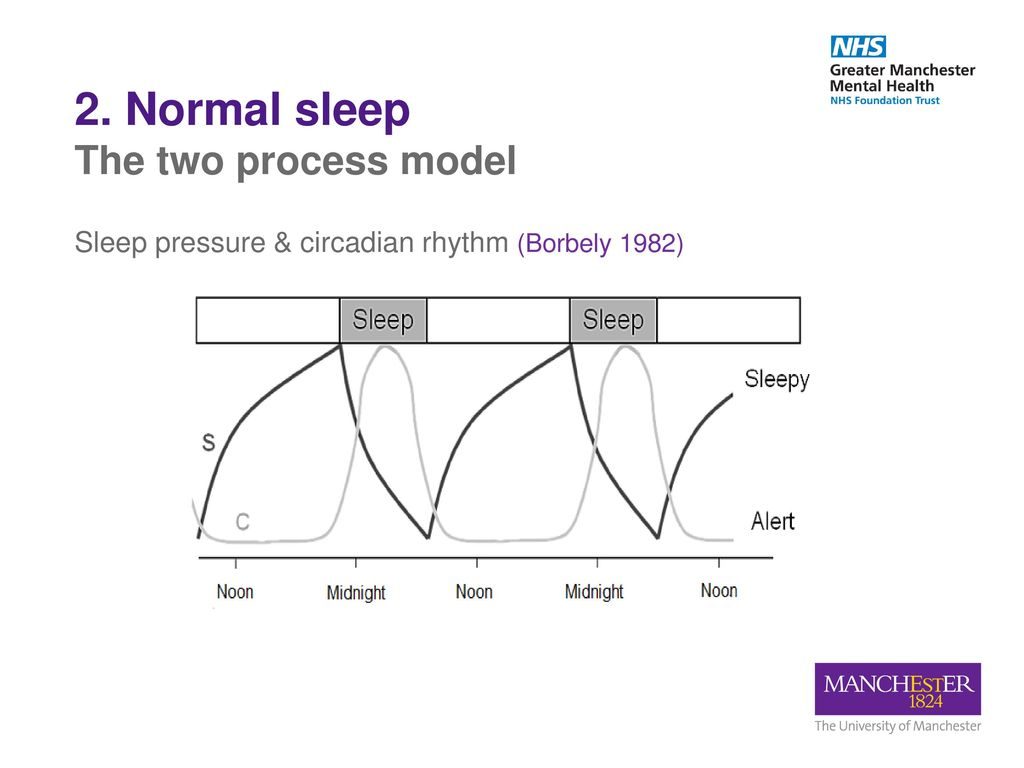
1st There’s a 24 hr circadian rhythm (controlled by Clock, Cryptochrome, and Period proteins in the body).
2nd there is sleep pressure — the need for sleep.
If you’ve had the experience of being tired but unable to fall asleep, or having slept but feeling tired all day, it’s because these two processes are running out of sync.
Environmental cues can shift either of these processes, and if one of these is off, your sleep is off, and therefore your recovery is negatively impacted.
What can we do regulate sleep pressure and improve circadian rhythm so that we get enough sleep and are not finding ourselves tired during the day or alert at night?
There are forces we can’t stop: DST & time zone changes.
But we can choose to get a more regular pattern of sleep with more consistent wake/sleep times. This will probably never be perfect, but it can usually be made much, much better. If you’re struggling to get or stay asleep, this can be life-changing.
We can adjust the environmental cues that can disrupt the sleep processes…
We’re really talking about what’s usually called Sleep Hygiene.
How to improve sleep hygiene:
- Blue wavelength light can completely shut down melatonin production, which will disrupt sleep. Blue light is present in sunlight, but also on screens — TVs, laptops, phones, etc. Using F.Lux, Night Shift, or blue blocking glasses when the sun starts to set are all helpful, but you should get away from screens 60-90 minutes before bed, and you should NEVER look at your phone if you’re in bed.
- Other environmental cues we have a ton of control over are the bedroom itself, which should be pitch black (eye masks are a good choice, especially while traveling), cool, have adequate airflow, and be silent (or have white noise if you’re in a noisy environment). Sleep hygiene has huge impacts on both quality and quantity of sleep.
What do we do if we’re low on sleep, also called “Sleep Debt”?
1st, It’s a myth that you can’t make up for lost sleep. You can, and you should. This is called recovery sleep, and getting that recovery sleep will help fix up sleep pressure that’s happening at the wrong times, so that you can get back into a more regular rhythm. You can make up for lost sleep by getting in more hours at night, but you can also take naps.
- Naps: If you can fit in a mid-day nap (typically ~30-90 minutes) to help make up for nighttime losses, that’s perfectly acceptable, and there’s some evidence that people who nap regularly are healthier overall.
- Know how caffeine/and other stimulants affect YOUR system (fast or slow metabolizer). Caffeine has an approximate 5 hr half-life (so 10 hours later is when it’s out of your system). This is the basis for the general recommendation that you cease significant caffeine intake by noon.
If you haven’t checked off these incredibly easy boxes, it’s time to do so. These are non-negotiable and there is no replacing sleep. Commit to sleep.
What else do we use for recovery?
Soft-tissue work. We’re big fans of “SMR”. There are lots of terms you’ll hear associated with SMR, from trigger-point therapy, to fascial manipulation, but we’re really just talking about soft-tissue work that helps you feel and move better.
A quick caveat — we’re licensed massage therapists, but we’d STILL rather see you using a foam roller and lacrosse ball properly each day versus paying us top dollar to work on you once a week. This may sound arrogant, but we are pretty confident our hands are better than a little rubber ball… but we also know using it properly each day for 5 minutes will do double what we can do in one hour a week — frequency trumps intensity. The best part is that these tools are insanely cheap, portable, and effective. We’ll be running you through some drills and “hot-spots” for dancers later, so you’ll have an opportunity to learn how to use the tools or to refine your technique.
SMR segues naturally into what’s next on the recovery spectrum because, and again, this is coming from someone who gets paid top dollar to do soft-tissue work on other people, the changes from soft-tissue work rarely stick unless you do Mob/Stab drills directly afterwards. A massage is great if it relaxes you, but it’s not portable or cheap, and on its own it’s not as effective as it should be — if you choose to get one, lock in the positive changes by performing Mobilization and Stabilization drills directly afterwards.
Mobilization and Stabilization drills:
Joints that move too much are prone to injury. Joints that move too little will cause other joints to move too much and those joints will be prone to injury.
Choosing the correct mobility and stability drills will help put the system back into balance and help you move and feel better.
The reason this feeds back into recovery is that spending more time with your joints closer to neutral will down-regulate threat perception in the CNS by reducing afference from mechanoreceptor dense joint capsules — which is a fancy way of saying that your brain and nerves don’t like it when things get unstable or when they’re locked down.
The correct Mobilization and Stabilization drills will reduce threat-perception and improve your ability to move through space in a controlled fashion — win-win. We’ll be running you through some of these drills on Monday as well.
These will naturally segue into training because appropriate training builds and reinforces positions and patterns — you want joints that are closer to neutral every time you train (or dance, BTW). We sometimes call this “uncoiling”. You might become “coiled-up” while dancing, so the last thing you want to do is begin training or dancing already coiled-up; you want to uncoil before AND after every session. You want to uncoil beforehand so that you can prepare to coil without a heightened risk of injury, and you want to uncoil afterwards to begin the recovery/parasympathetic processes.
The secret, as you may have noticed, is that this SMR and mobility/stability work can (and should) become your warm-ups, cool-downs, something you use during times of high-stress, as neural resets, for injury pre-habilitation AND rehabilitation, and so forth. Again, we’ll take you through some of these drills Monday.
What else can we use to make sure you’re recovering properly?
Nutrition: Wait… nutrition is a recovery strategy?
Of course it is. You are made from the stuff that went into your face. We’ll get detailed about how to get the most from your food in the final section of this talk, so stay with us!
Finally, there’s the recovery strategy that ties everything else (in life) together…
BREATHING
We’re all doing it; but are we doing it well?
Okay, so why are we talking about breathing? Remember when we mentioned parasympathetics earlier? The ANS is comprised of the sympathetic/stress/fight or flight branch, and the parasympathetic/relaxing/rest and digest branch. Breathing is literally a way to increase or decrease stress, and it’s essentially the only one that happens unconsciously, but that we can adjust consciously.
This is even more important for the dance population because so many of you have congenital or imposed Hypermobility. If you look into the research you’ll find that there’s a strong correlation between hypermobility and anxiety. And why shouldn’t there be — if you’re unstable the CNS must stay extra vigilant to keep you from hyperextending or dislocating. Mechanoreceptors are constantly monitoring your joint positions for potential threats.
This is part of the reason long duration stretches and yoga poses need to be chosen wisely — if you move further from neutral you directly increase systemic stress and anxiety.
If that’s not enough, motor learning research has shown that you can’t learn movement as effectively in a heightened sympathetic state.
So, how should you perform recovery breathing?
Ideally, inhalation is primarily the responsibility of the Diaphragm; which has direct anatomical connections to: lumbar spine, QL, psoas, pelvic floor, transverse abdominis, internal abdominal oblique, and multifidi; as well as erectors, glutes/ITB (to below the knee), and lats (via the Thoraco Lumbar Fascia). Oh, also your lungs. Oh and also digestion & blood flow — the esophagus, inferior vena cava, and abdominal aorta all run through the diaphragm.
In an ideal anatomical model ALL abdominals are exhalation muscles: rectus (i.e. your 6 pack) , IAO, EAO, and TVA! And I know I’m about to blow some of your minds but EMG research has shown that exercises like Pilates 100s do not “activate” your TVA. The best way to get the TVA back on board is proper exhalation. Once you figure out how to get all the extra air out of your lungs your TVA will be the star of the show. We’ll get into drills for this as well tomorrow, so hold onto your pelvic floors, things are about to get bananas.
What happens when we breath less than ideally?
We pull in the accessory/secondary breathing apparatus. We get a toned-up diaphragm, and the scalenes & pecs have to do the work of pulling air into your lungs: and voila! We get neck and ribcage stiffness. Now you have a neck, shoulder, and back exposed to injury risk because they’re spending time stabilizing instead of moving. And because they’re attached to a ribcage that isn’t moving with synchronicity, we get a reduced capacity to use the lower half (lumbo-pelvic region) to balance us (movement quality) exposing our lower backs and hips to added risk as well. And dear lord what if your secondary breathing apparatus is working asymmetrically — and only one side of your body is doing all that pulling!?! What do you think happens to your CNS, the threat perception, the feelings of tension, the exposure to movement compensations, the increased injury risk, the decreased recovery capacities, the stress state.
Did we just stress you out?! How’s your breathing doing now?
Why train? / Isn’t dance training enough?
The simple answer is a hard ‘no’. The burgeoning Dance Medicine Research industry has shown that dancers have basically the same injury rate as rugby players (Incidentally, the Mayo Clinic recently noted that people who practice yoga also have a similar injury rate — so, you know, choose your poses wisely).
Here are just a few reasons why dancer’s suffer such a high incidence of injury:
- Dancers have below average VO2max (i.e., aerobic capacity).
- Dancers are wildly under-exposed to appropriate cross-training —why are golfers getting better physical training than dancers?!
- Dance is inherently dangerous:
*GRFs & inertia, are gigantic — these are usually measured in Newtons. Think about it this way: Every step you take when you jog requires your body to absorb 2-3x your bodyweight in Newtons.
What do you think those forces look like when you grande jete through the air and land in, shall we say, a less than anatomically natural position? Can you imagine how many Newtons that is?! Well, we looked it up: it’s this many…
These forces are part of the reason we laugh when people are worried that weight training will make them bulky or that it is dangerous — btw, weight training? One of the lowest injury rates per hour of any recreational activity. According to one study you’re 150x as likely to get injured in gym class and over 1,500x as likely to get injured playing rugby — remember rugby?
Why else is dance producing such high injury rates?
Let’s see… really dramatic length-tension curves because you’re putting human joints into extreme positions, and doing so in multiple planes of motion, often with crazy acceleration.
You might already know this, but dance is extremely hard: the rate of force production/power, endurance, and strength necessary, often in unnatural movement patterns, is nothing short of extraordinary.
Dancing as a means for training to dance provides zero margin for error. You’re only as fit as your most recent, most taxing dance training or choreographic project.
What happens if you have to do something a bit outside of your current capacities? Your body pays the price — either immediately or over the course of time.
So what do we do about this?
We prepare — We “Train.” And because dance is hard, we have to train hard.
For us, training implies progressive overload, which is just the fancy way of saying slowly increasing the capacities of the body by adding more load to it day-by-day, week-by-week. And loading operates as a shortcut. It shortens the time required to cross-train (and your lives are busy enough), and it shortens the time to improve positions and movement patterns. If you have to practice a weird movement for hours, are you going to spend an equal number of hours unwinding that movement? I hope not! And appropriate training means you shouldn’t have to.
Incidentally, S&C research has also shown that loaded training with a full range of motion improves ROM better than stretching and for longer (and when I say longer, I’m talking about multiple orders of magnitude), so this is another reason to incorporate loading, particularly in the patterns where dancers tend to be missing some range or motion — such as hip extension and dorsiflexion.
So, What is training for the dancer?
General Physical Preparation. This is not the time for dance. Even practitioners get this wrong most of the time. Training the dancer must prepare the dancer for the rigors, biomechanically and physiologically, for dance-ing but it should not look like dancing around with weights on. Dance is the skill — your general physical capacities are the limits within which your skills can expand.
Your training program should build the requisite capacities for you to respond and adapt to the stresses of dancing and the current choreographic projects you are involved in. In traditional S&C we would define a dancer’s needs as: Power, strength, and endurance. Beth and I would add stability, deceleration and load sharing.
Your program should also supply balance: it should fill in the gaps — the stuff you don’t get from being a dancer.
Let’s quickly define the aforementioned capacities:
Deceleration
The ability to slow down and control force production
Do you have brakes, or are you taking your Ferrari up to full speed and just hoping for the best? The more deceleration your muscle tissues can handle, the less stress the bones, joints and soft tissues will have to. This is important when landing a jump, but also will help control smaller and slower movements.
Stability
The ability to control and maintain movement through range(s) of motion.
We spoke a bit about stability when we were talking about “Recovery”. When we train we can dramatically shorten the time it takes for the Motor Control Center to uptake new positions by increasing the sensorimotor demand for good stability by loading the body hard while in good positions. Training good stability with load changes everything.
As a portion of Stability, in this room, we have to talk about Hypermobility vs. control over large excursions/ROMs. Mobility you can’t control will open the door for injuries & create tension/stiffness in other tissues/vectors (i.e., compensation patterns). Being able to launch your leg into space is all well and good, but if you can’t put it there slowly it’s not a position you have full control over, and it’s a much higher risk movement as a result. Hyper-Mobility/ligament laxity, both congenital and developed is obviously a part of the dance world. Also worth noting is that ligament laxity increases in the time between ovulation & menstruation (consider a tracking app such as “woman log”), so even greater stability demands are required at these times. And let’s be clear: when ligaments are lax, muscles and motor control are what hold you together — you’re going to want to train those. Eric fully ruptured his ACL in Jiu-Jitsu, but never got surgery — muscles and motor control keep that knee from dislocating. Train strength and stability and it will reward you.
Load Share
The distribution of forces across a series of joints.
What is Load Sharing? Load Sharing is what good motor control looks like: it’s the distribution of forces across a series of joints. If you can flex your thoracic spine: your ribcage area, but can’t flex your lumbar spine: your lower back area, you aren’t sharing forces as well as you could. This predisposes you to movement issues, potential pain, and injury. It also robs you of stability. Big range of motion is important; load sharing over that big range is even more important.
Endurance
The ability to perform efficient work over time.
Do you have a margin for error, or are you running the engine hot at the end of every number? What if you get cast for something just slightly harder? How will you perform? Will you get injured before you get to the stage? How will it look if you have headroom instead of none? We get a lot of stories from our dancers about everyone else in the room being completely smoked while they feel like they could go a second time.
Strength
The maximal force applied against load.
How strong is strong enough? It depends on what you have to do, but we want you strong enough to prevent injury; strong enough to jump, to lift, to move a limb into its far excursions without relying on momentum, to absorb the force of landing (~5-7x BW for dancers). So how strong? If you weigh 100 lbs, you need to be able to absorb over 700 lbs, repeatedly.
-Power: Power = Force over time. It is strength expressed quickly. Yes, this is jumping high and moving fast, but it’s also realigning joints quickly to protect ligaments — e.g., if you roll your ankle you want the muscles surrounding the ankle to respond quickly enough to avoid sprain or strain.
We just defined 6 domains that require attention. Lacking in any domain increases risk of injury both chronic and acute, both insidious and traumatic. Excellence in these domains enhances both performance & resilience.
So, how do we optimize ourselves?
How do we improve in these domains? We like weight training, KBs BBs, because we feel it is the easiest and fastest. Our dancers have much less pain, lower injury rates, and better movement when they’re pushing and pulling hundreds of pounds around the gym than when they only have their bodies as tools. But we know that not everyone here has immediate access to the best tools, is ready to go through the learning curve, etc., so we’re going to focus on using your bodyweight as a training tool. If you have an interest in learning the basics of barbells or kettlebells we can recommend some nice starting resources.
We need to build programs that enhance all the domains. Programs require balance between movement patterns — you don’t get to just get to do the stuff you’re good at/that you like. You might be awesome at pressing, but if you’re not pulling, you’re putting yourself at risk by biasing joint forces in a single vector.
Incidentally, this is likely part of the reason we see so many yoga injuries with our dancers: it biases hip flexion dramatically, just like dance. Hip flexion is important, but without adequate hip extension things can get pretty ugly pretty quickly.
Here is the basic program structure:
-Breathing resets
-Soft Tissue work
-Mobilize only the shorter regions
-Stabilize by shortening the long regions *back to neutral* / “Pillar Prep”
-Build-up of demand (i.e., light, specific warmups, tissue temp, moving towards sympathetic state)
-Go Hard! (Loading is a shortcut to maintaining the positive changes you’ve just created)
-Get back to parasympathetic… breathing, soft tissue, mobilize, stabilize.
Okay. Food. Food is this crazy thing. We eat thousands of pounds of it a year, incinerate it in our bodies at like 98 degrees, and turn it into parts of ourselves. It also represents so many things to us as individuals and as a society. It’s not just fuel for our bodies — it’s a part of ceremony, celebration, mourning, caring, love, sharing, joy, sadness…. It gets valorized or vilified in weird moralistic ways: “Sugar is Poison!” “Kale is a Superfood!” We do a lot of weird stuff with food.
For our purposes today, we’re only going to talk about food and performance, but we’re not going to try to extract it from its social trappings. We’re not expecting you to walk around with a scale and a bean counter. In fact, we’re expecting you to not do that.
So, we’re gonna try to perform a magic trick today. We’re going to talk about nutrition basics in a technical way, and then we’re going to try to turn that into a meal you might actually eat.
Okay, here we go…
Macronutrients: What are macros? As the name implies, this is the big stuff: Protein. Fat. Carbs. Alcohol.
- Protein/Amino Acids are an essential building block for pretty much every cell in body: muscles, brain, organs, hormones, neurotransmitters, DNA (important stuff!).
- Fats/fatty acids are essential for absorption of certain vitamins & minerals, and are the the foundation for every cell membrane in the body. Also, there are essential fats (meaning we have to ingest them or we can’t survive).
- Carbohydrates/saccharides are the primary fuel source for the body (including the brain) and can be stored for later use in muscles and the liver.
- Alcohol… alcohol makes us feel funny.
Protein should form the backbone of your meals because there are two main populations that need more protein: athletic populations and those who are eating below maintenance calories — AKA, dieting (protein becomes even more important if the diet is lower in carbohydrates). Current research leads to the general recommendation that athletes and those who are dieting should get 50-100% more protein than a sedentary person in order to meet basic needs.
Fat quality is critical since fats are more integral and will feedback into how every cell in the body is formed. There’s a lot of argument when it comes to fats and the research is ridiculously weak and equivocal, but there are some things that seem pretty clear at this point:
- Omega-3s are important and hydrogenated fats/trans fats should generally be avoided.
- Monounsaturated fats are generally considered quite healthy (though there are some concerns surrounding peanut oil and canola/rapeseed oil) and are found abundantly in olives, avocados, and nuts. They theoretically help to maintain the fluidity of cell membranes and keep them from getting too rigid.
- Polyunsaturated fats: There’s a great deal of contention surrounding polyunsaturated fats, but omega-3s are polys and we need them to survive (omega-3s are found abundantly in certain fish, but appropriate supplementation with fish or krill oil is probably a requirement for most people at this point in time, due in large part to lower naturally occurring levels in our staple foods, high omega-6 intake (which antagonizes omega-3s), and risks associated with consumption of large amounts fish (things like mercury, PCBs, etc). We’ll touch on supplementation in a bit.
- Saturated fats have gotten a bad rap over time, but they help to create important stability in cell walls, and are present in most types of fats. There isn’t typically a need to seek out sources of added saturated fat, and unless you’re drinking the stuff the evidence that it has any negative impact on your health is weak at best. But, speaking of drinking a boatload of saturated fat, it should be noted that doing crazy stuff like putting a ton of coconut oil and butter in your coffee, ala bulletproof coffee is ill advised for most people. Too much of a good thing is still too much.
While we’re talking about protein and fats, because we hear questions and concerns about this all the time, it bears noting that processed meats (and processed foods in general) may increase long-term risks of CVD and certain cancers. But unprocessed red meat clearly does not carry CVD risks, and any honest lit review shows this pretty clearly. Is red meat cancer risk reducing or increasing? We honestly don’t know, but it seems to have a fairly insignificant impact if any, and by most measures neither increases nor decreases risk. If you’ve heard differently, be sure you’re looking at the actual data sets, statistical analyses, research methods, and conflicts of interest — you might find that the information source is deeply flawed. So, if you like red meat, don’t fear it — it’s a great source of many essential nutrients. If you don’t like red meat, don’t worry about it — you don’t need red meat to have a healthy, performance enhancing diet.
Back to fats… few of us are struggling to get in enough fat, but if you’re restricting it significantly this can produce issues with vitamin & mineral absorption (some vitamins and minerals are fat soluble, meaning they can’t be properly absorbed without fat).
Balance here is important, and it’s easier to find balance (and nutrient density) with less refined carbohydrate sources (i.e., veggies, fruits, and whole grains vs. juices, refined sugar, and “whole grain” breads). Carbs have gotten a bad rap recently, but cutting them too low is generally not recommended. No, they’re not technically an essential nutrient — you can live without carbs; you just might feel and perform like hot garbage. Having enough carbs while maintaining adequate protein and fat intake is critical to performance. Getting the vast majority of carbs as a wealth of vegetables, some fruit, and some whole grains, legumes, and starches works well for most.
Alcohol
This one clearly isn’t essential. Listen, we like our drinks and we’re not going to get on any soap-boxes, but we also don’t make the rules — alcohol is dense in calories and may have potentially deleterious effects. If you’re going to drink, you’re going to have to figure out how to balance the rest of your nutrition with that in mind.
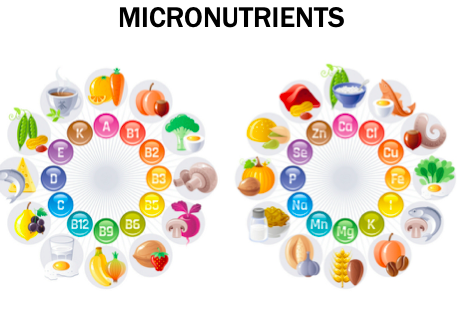
These are the dozens of essential vitamins, minerals, and trace minerals, but we’ll lump in things like polyphenols, co-factors, and the host of things we see when we put food through a gas spectrometer but don’t have names for.
When it comes to micronutrients, getting a wide variety of whole food sources is your best bet. The more you restrict a category, the more you need to pay attention to micronutrients. If you’re a vegetarian, don’t eat certain vegetables, restrict your salt intake (which you definitely should not do, BTW), are allergic to dairy, or what have you, you may need to find ways to make up the gap. This is highly individual, so if there are things you don’t eat, you may need to look into what those foods are good sources of and find an alternative. You may even need to supplement. We’ll talk more about this when we cover supplements, but multi-vitamins and multi-minerals are not the same as whole food sources and the jury is out on how helpful or harmful they may be if taken when not necessary, so focus on whole food sources first.
Final boring general nutrition info.
Calories: We hate talking about them, but we have to. They count — when you’re gaining weight it’s because you’re eating more calories than you’re expending, when you’re losing weight it’s because you’re expending more than you’re eating, and when you’re maintaining weight it’s because your average intake matches your average expenditure. Those are the laws of physics.
That said, it’s essentially impossible to know what the calorie content of your food is, how you’re body is processing it, or what you’re burning. I know many people like to count their calories, and it certainly helps some people make and stick to plans, but “counting” isn’t a great term — having a very vague guesstimate is much more accurate, even for the super anal-retentive types who weigh and portion everything.
This is because, even if you weigh every last peanut, each peanut is unique, and may not match what someone at the USDA put into a bomb calorimeter many years ago. How you chew your food has an impact on how many calories you absorb, the makeup of your meals and the amount of food in your stomach has an impact. How food is processed has an impact — back to the peanut, for an equal number of calories you generally absorb about 50% more of the calories in the peanut if it’s ground into peanut butter first. Everything has an impact, and no one has a way of determining what that impact is at any given moment.
Nutrition labels: They’re just not accurate, so don’t get caught up in the numbers. Numerous studies have shown that they have about a 25-50% margin of error. What’s more, the calorie and macronutrient numbers shown are estimates based on how the average person processes food — which is to say, this isn’t even supposed to represent what’s in the package — it’s supposed to represent approximate absorption, and each of us processes and absorbs food differently at different times. If you want to use them as a guide, that’s great, but don’t be one of those people who eats a bunch of packaged food because it feels like you have more information about or control over your caloric intake.
Okay, let’s turn all that weird stuff back into food…
“How in the hell are we supposed to make use of that jumble of information? Enough with the ‘nutrition basics’, I just want to know how to have tasty meals that will help me look and perform my best.”
Here’s a sample Plate:
- Men: 2 palms protein, 2 thumbs fat, 2 fists veggies, 2 cupped hands of carbs
- Women: 1 of each
- Remember that fats are often already in your proteins and don’t need to be added.
- Many foods don’t fit neatly into a single category: beans and nuts are often called high protein, but they’re not — they’re really carbs and fats, respectively. Eggs are in-between the fat and protein categories. Again, don’t stress out about these granular elements. It’s about using this as a guide and then checking to see how it’s working for you.
- And as we mentioned before, variety is critical for micronutrient intake. It also tastes better and is more fun.
If you’re having ~3-4 of these types of meals each day, they don’t need to be perfectly even in volume, nutrients, or timing. For instance, the two of us tend to eat two very small, snack-sized meals each day, and one huge meal. The differences in terms of absorption are nominal. If you missed some veggies or protein at one meal, or on a given day, it’s not that big a deal; feel free to make up for it at a later meal. If you went way overboard with the fat or carbs at a meal, feel free to have less at the next meal. This is the 80/20 rule for eating, so don’t stress out about the little stuff.
If you’re trying to gain or lose fat or muscle, start with this guide and then add or subtract based on whatever metrics you’re using to determine what’s working (I generally use a mirror and a scale that also estimates body-fat%, but I don’t get too caught up in these measurements because measurement reliability is questionable and day to day fluctuations are vast — they just operate as a guideline for if I’m trending up or down. Pictures, and tape measures are other commons ways to track progress over time, but usually take longer to see large levels of change).
Because fluctuations in measurements can be pretty dramatic don’t make constant adjustments to your eating plan. After a week or two if your metrics aren’t trending in the direction you’d like, add or subtract a meal, increase or decrease carbs or fats (or alcohol)… give it a couple of weeks and recheck your trend.
And if all of that is just way too much to digest, how about this: At the Olympic Training Center in the US the basic diet advice was this: “Protein, Veggies, Water.”
Obviously there’s a bit more most of us eat than that, but the idea was that this was going to form the backbone of most meals, that is to say, about 80-90% of the time. If that was in place it didn’t really matter what the other 10-20% of the meals were like. It’s a nice touchstone.
At Bergmann Fitness and DRS we talk about a lot about being 90% consistent, 90% of the time.
Which is just our way of saying that if 90% of meals have that protein, veggies, water backbone, 10% of the meals can be pizza or birthday cake or whatever. And that 90% only needs to happen 90% of the time. The other 10% of the time we’re on vacation or whatever and are simply eating whatever sounds insanely delicious, happens to be available, etc. 90% consistency 90% of the time will get pretty much anyone as lean as they could want to be.
While we’re inching towards it, we’d like to touch on what we consider the elephant in the room: dance aesthetics and dieting. Dieting has become a dirty word recently. We’re pretty ambivalent about the term, but know that it can set some people on edge. What we’re really talking about is what is required to maintain a certain level of leanness. We’re hoping you’ll take advantage of the information we’ve provided and can use the simple hand portioning techniques or the 90% 90% of the time to help maintain a lean physique while keeping performance and health levels high, all while avoiding crash diets or extreme restriction at any point in time. But, even in a perfect world, the leaner you get, the more carefully you need to plan out your food. If you’re getting fewer calories, protein becomes even more critical because you’ll be burning through this essential nutrient at a higher rate and because it helps to keep you satiated. Fat choices become critical because there’s less wiggle room, calorically. Vegetables become more critical because of their nutrient density, high fiber, and low caloric density, and because they’re satisfying. This issue here is that there is a fine line between preparing and planning for dietary success and growing obsessed, constantly thinking about eating (or not eating), and setting the body up for hormone backlashes, binging, and massive emotion distress.
We have our concerns about eating disorders, and we’ve both had fraught relationships with food and with our bodies in the past. We’re also quick to say that eating disorders rarely have anything to do with the food itself, but rather with our perceptions surrounding food. However, there are environments that predispose us to disordered eating, and we’re sensitive to how over-analysis of nutrition in a high pressure environment where your body is your instrument increases risks dramatically. We’ve known far too many dancers who needlessly put their health and performance at risk because of unhealthy obsessions with food. We know too many dancers who “can’t” eat certain foods, who turn to hyper-restrictive diets, or who get pseudo-scientific allergy tests, when what they’re really saying is that they want a socially acceptable way to restrict their food intake. I want to say that it doesn’t have to be like this. But I also want to say that sometimes it is…
Whether you have been personally affected by an eating disorder or care about someone who has, there are programs and services designed to help you find the help and support you need. For example the National Eating Disorders Association (NEDA) is the largest nonprofit organization dedicated to supporting individuals and families affected by eating disorders. NEDA supports individuals and families affected by eating disorders, and serves as a catalyst for prevention, cures and access to quality care.
And if we haven’t said it yet, there are no good foods or bad foods. Eating or not eating a food does not make you a better or worse person. There are also no super-foods or foods that are “toxic” or “poison”. Red meat doesn’t lead to heart disease, salt doesn’t have a significant impact on blood pressure, blueberries don’t cure cancer, sugar isn’t poison, coffee has an enormous range of health benefits… simply put, don’t believe the hype, and don’t freak out over whether you did a “good thing” or a “bad thing” by eating something. If it fit your goals, great. If it didn’t, don’t worry about it — you don’t have to be 100% consistent to get insane results.
We’re going to touch on a few granular elements of nutrition that bear mentioning, but first, vegetarianism and veganism requires a quick chat.
- For lacto-ovo vegetarians or pescatarians, not much changes, you just have more limited protein options.
- For vegans… our recommendations aren’t going to play that well with the limitations of veganism. This is not to say that it can’t be done well, but it is much, much harder and you have to REALLY know what you’re doing. Sadly, much of the information about veganism is somewhere between half-true and totally false. We know a researcher and clinician, Melody Schoenfeld, who couldn’t get a book through a certain publisher because they wanted to say that you can be a vegan without taking supplements. She knows that to be false and that such a recommendation is wildly dangerous (for instance, vegans require supplemental B12). So she had to find a different publisher, while that publisher simply found someone who would take the money to tell those lies and put peoples lives at risk. This story isn’t unique. A lecture on veganism is way beyond the scope of what we’re doing today, but if you are a vegan, Dr. Ryan Andrews is a great resource and has published a fair amount of free material on the web. Understanding the free amino pool, the affects of sunblock on UV absorption, getting appropriate supplements (e.g., B12, vitamin D, iodine, calcium, iron, zinc, krill oil, probably taurine, creatine, pea protein, etc.), and keeping tabs on your protein and fat sources will help you maintain your health & performance.
So, we have some questions for you. By a show of hands, who has heard that…
- Small meals are better than large meals because of the thermic effect of food or because of protein synthesis?
- That you need to eat every 3 hours?
- That you shouldn’t eat late at night because it turns into fat?
- That you should get most of your carbs in the morning?
Good news! All false! You don’t need to worry about these things! There’s so much in the media, the dogma, the lore, that is simply untrue. We can go into detail about how and why if anyone cares, but stick to the basics, apply the 80/20 rule. Stop freaking out about the little things. It doesn’t have to be so hard and so stressful.
Supplements – the good, the bad, the ugly:
- Vitamin d supplementation, particularly living in Chicago in the winter. 1000-2000 IUs is average. Darker = higher dose. Uber-pale may not need any.
- n-3s (fish, krill)
- Some evidence that high dose multivitamins actually shorten your lifespan. Supplement only what you are deficient in. Like we mentioned… Most of what we see in a gas spectrometer we don’t even recognize — supplementing simply doesn’t provide a fraction of what real food provides — the best supplement will always be eating better.
- If you’re going to supplement, do some research:
labdoor.com, free registration. Look at the lab assays and choose wisely. Check toxicity levels.

